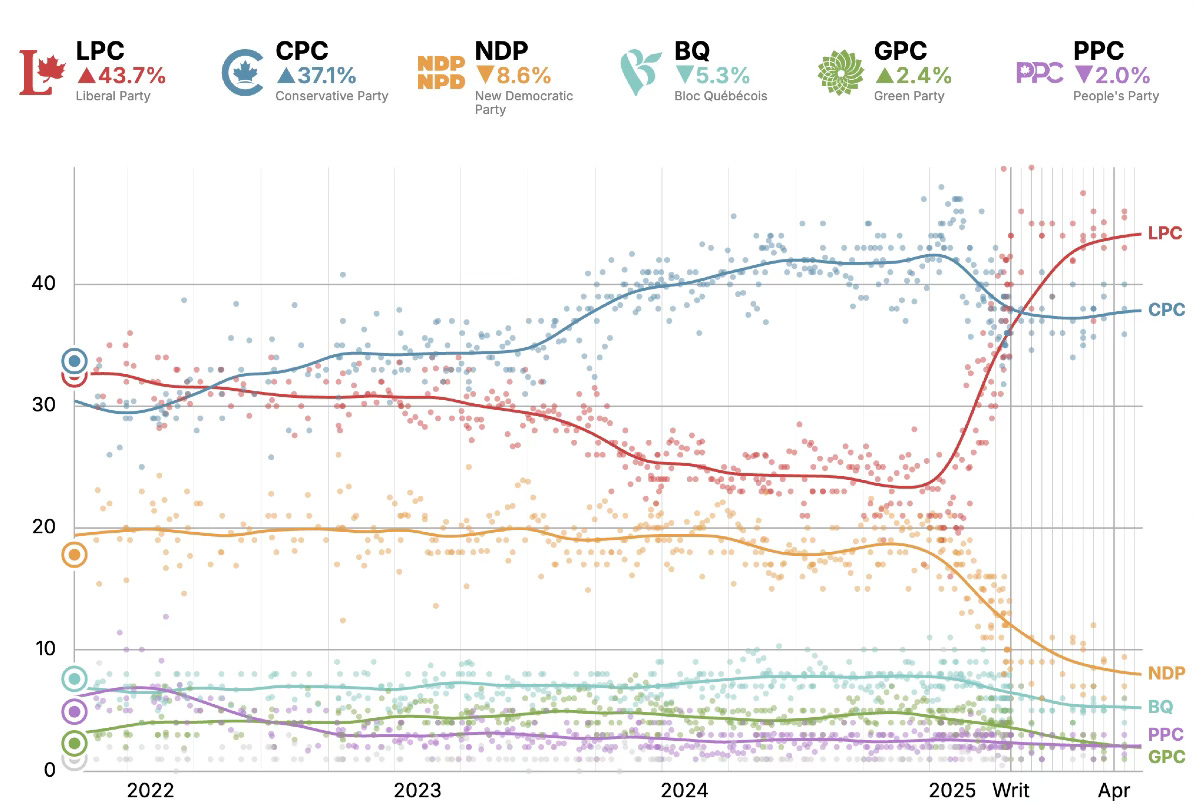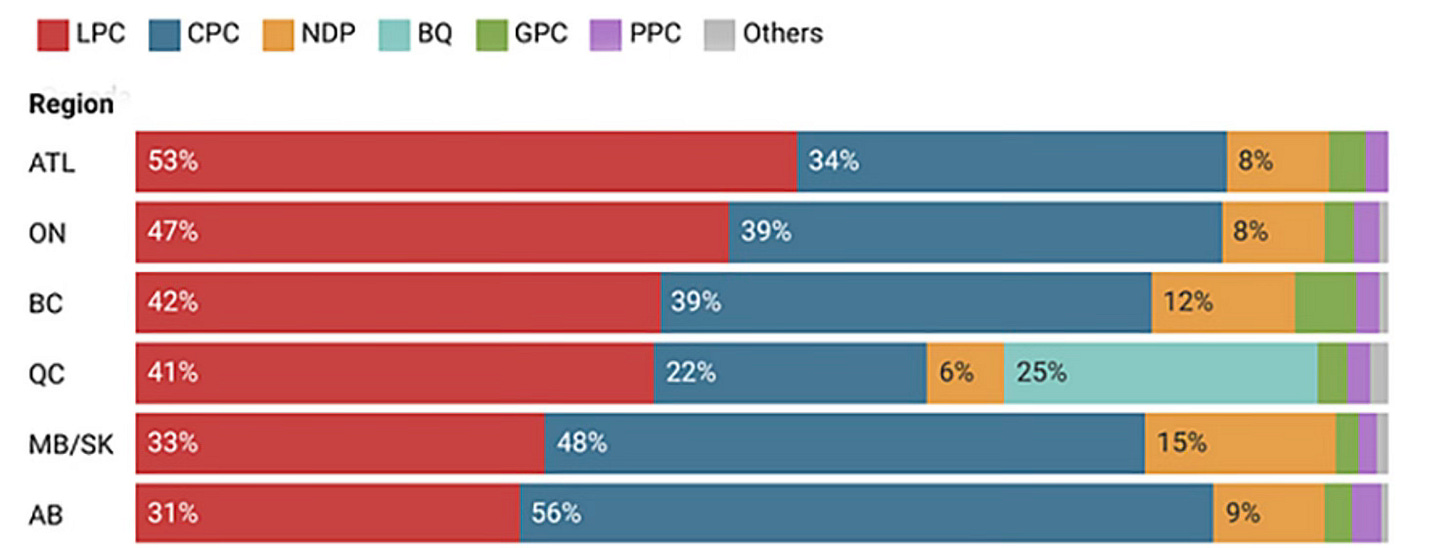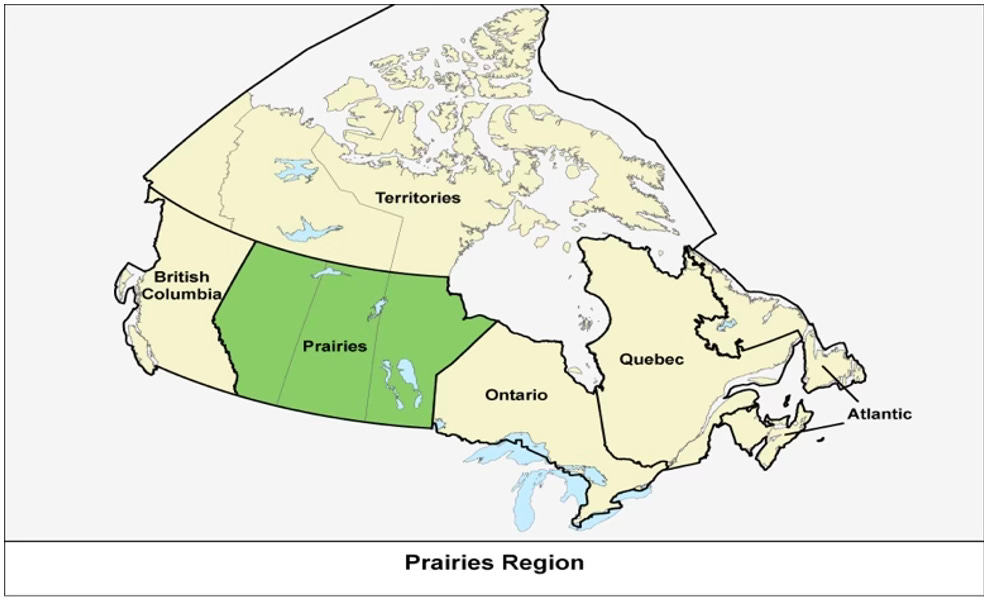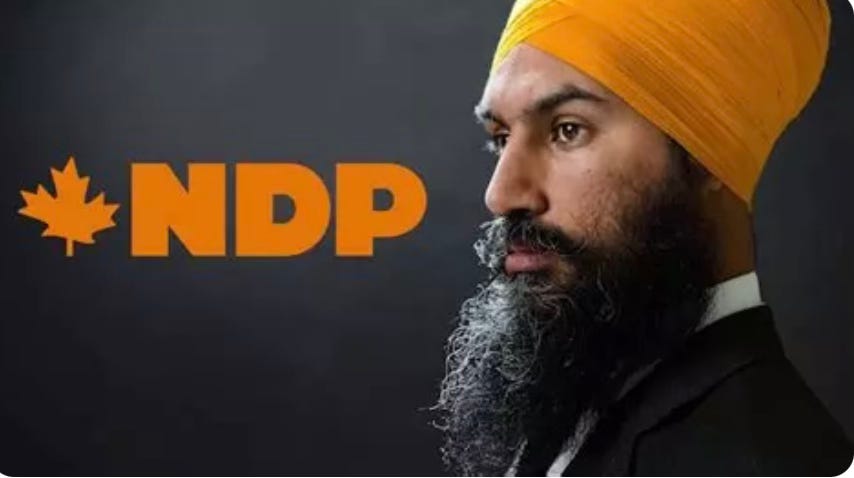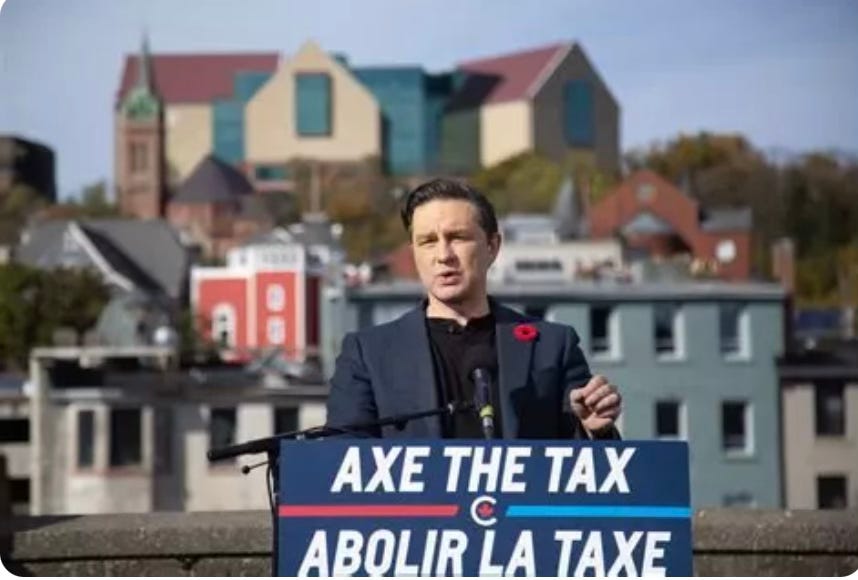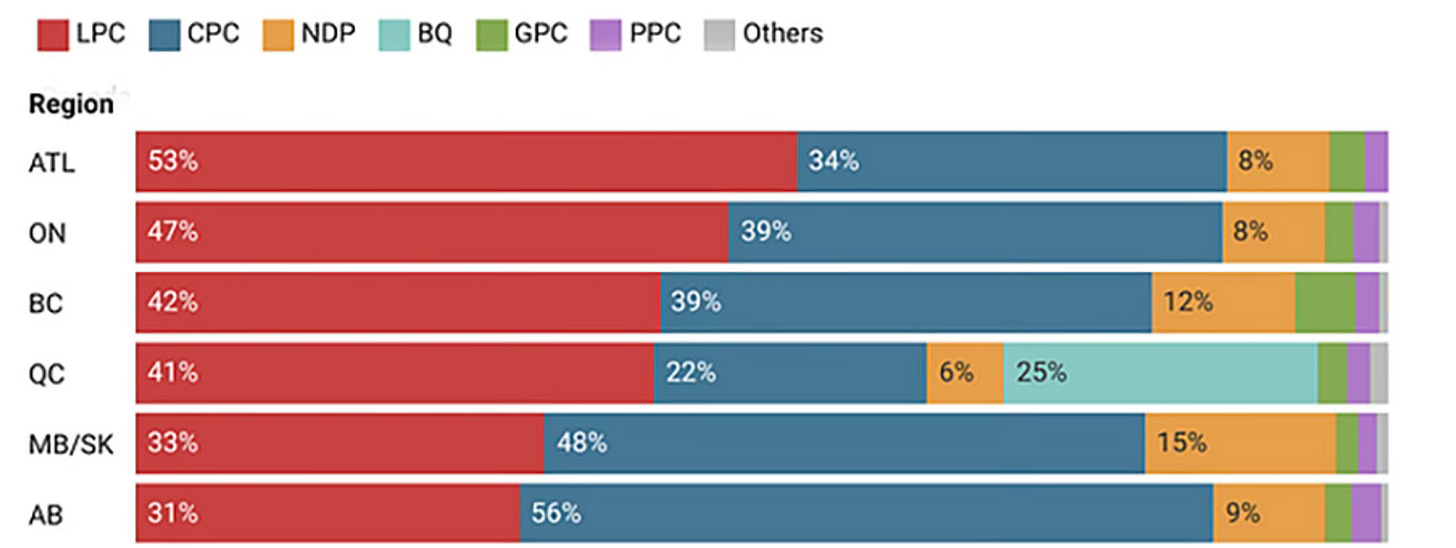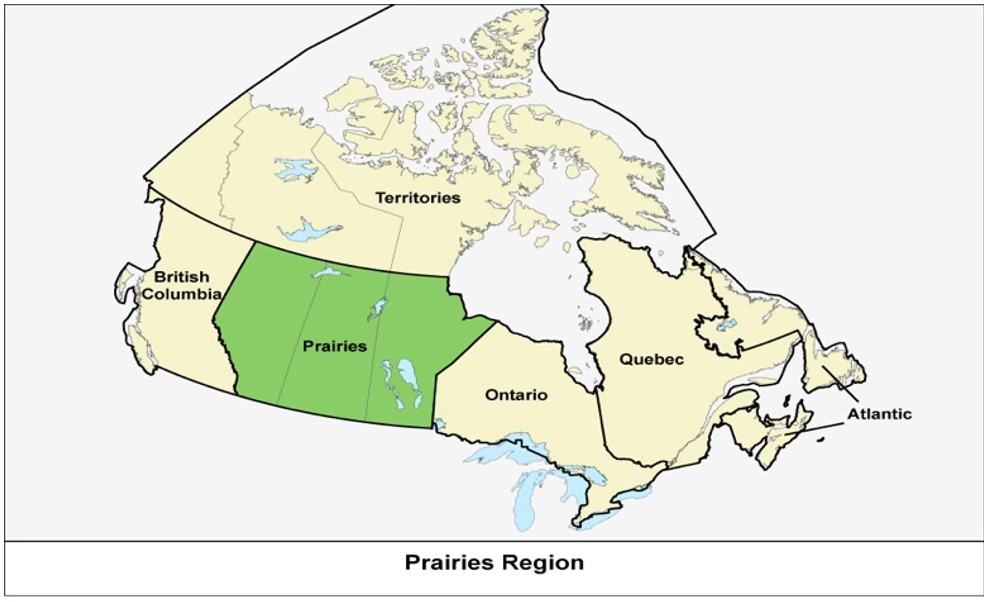Canada Votes: Everything Back in Play/Canada al voto: Tutto ancora in gioco
Carney’s Liberals Poised for Majority? I Liberal verso una possibile maggioranza? (il testo in italiano segue quello in inglese)
An analysis of recent political dynamics in Canada, with Mark Carney's Liberals in the lead and the challenges faced by rival parties/Un'analisi delle recenti dinamiche politiche in Canada, con i liberal di Mark Carney in vantaggio e le sfide affrontate dai partiti rivali
Liberal Leader Mark Carney as he speaks at a rally in Montreal on Thursday, March 27, 2025. THE CANADIAN PRESS/Frank Gunn
The lead in voting intentions has shifted, and even in terms of seats—which are what really matter in forming Parliament—Mark Carney’s Liberals, who replaced Justin Trudeau less than two weeks ago, could now aim for a majority. This would avoid the need to form coalitions (possibly with the previous legislature’s ally, the New Democratic Party, NDP, on the left of the political spectrum) or, alternatively, to request the same NDP or the Québec-based francophone party, the Bloc Québécois (BQ), to abstain from voting against the government, thereby allowing the Liberals to govern with a minority.
Pierre Poilievre's Conservatives Stalling
The victim of the dramatic turnaround in a situation that, just two months ago, seemed set in stone (a Conservative Party victory) is precisely the party led by Pierre Poilievre, now paying the price for his decision not to change an electoral strategy entirely focused on what he calls the disastrous decade of Justin Trudeau-led governments. The “Trump factor”, with tariffs and threats to the very sovereignty of the country, has completely reshuffled the cards and the slowness with which Poilievre took clear and decisive positions against the utterances of the man in the White House has certainly not helped the Conservatives' cause. At the root of this hesitation was undoubtedly the fear of alienating that part of the electorate that – with the likely exception of the annexation of Canada to the USA – doesn’t see Trump's policies as all that bad.
Source: Polling Canada
To date, at the provincial level, the Liberal Party is ahead of its conservative rivals in all provinces with the exception of the so-called Prairies, namely the oil-producing province of Alberta (not surprisingly nicknamed the Texas of Canada) and the country's two breadbasket provinces, Saskatchewan and Manitoba (hence the name of the famous flour).
Source: Polling Canada
Displayed on a map of the country, this data suggests that the divergence in consensus follows, in some ways, the pattern of “coastal regions versus central regions.”
Source: StatCan
NDP’s Blind Alley
There are still two full weeks of campaigning, and everything could change again when it comes to the party that will appoint the next Prime Minister. What is unlikely to change, however, is the projected collapse of the NDP, the country’s official left-wing party. Even in British Columbia, the province that awarded the party 29 percent in the last federal elections in 2021 (over ten points higher than the national average of 17.80 percent) and which currently has an NDP-led provincial government, the party's popularity is plummeting. Broadly speaking, there are three reasons for this. The first is that in many respects, having acted as a crutch for the last Trudeau government, the NDP is seen as jointly responsible for that government's policies. Paradoxically, the polarization of the political landscape triggered by Trump’s intrusion—the second factor squeezing the NDP between the two major parties—has caused the NDP to bear the brunt of the discontent over those policies, more so than the Liberals, who were actually behind them. Finally, there's leader Jagmeet Singh’s insistence on running as a potential Prime Minister, even though it’s clear that the NDP currently has no chance of leading the country. That said, running openly as a potential junior partner to the Liberals could also mean the party’s annihilation: if a voter is fine with the Liberals in government, s/he might as well vote for them directly.
Jagmeet Singh, leader del New Democratic Party.
A Two-Horse Race: Liberals vs Conservatives
Given that the Green Party (GPC) will largely play a symbolic role, hoping to retain a couple of traditionally loyal ridings, and that some Bloc Québécois voters, despite being Francophone, appear willing to back a Prime Minister (Carney) whose French is mediocre, the race still remains uncertain between two contenders, Liberals and Conservatives. What’s certain, however, is that whichever party wins, the country will look very different from just three months ago.
Elezioni canadesi: tutto di nuovo in gioco
I Liberal verso una possibile maggioranza?
Un'analisi delle recenti dinamiche politiche in Canada, con i liberal di Mark Carney in vantaggio e le sfide affrontate dai partiti rivali
Pierre Poilievre, leader del Conservative Party.
Il sorpasso nelle intenzioni di voto è avvenuto, e anche dal punto di vista dei seggi – che sono ciò che conta nella composizione del Parlamento – i liberal di Mark Carney, che ha sostituito Justin Trudeau meno di due settimane fa, potrebbero aspirare alla maggioranza. Questo eviterebbe la necessità di formare coalizioni – eventualmente con l’alleato della precedente legislatura, il New Democratic Party (NDP), a sinistra nello spettro politico – o, in alternativa, a chiedere desistenza allo stesso NDP o al partito francofono radicato in Québec, il Bloc Québeois (BQ), per poter guidare il paese con un governo di minoranza.
I conservatori di Pierre Poilievre in stallo
Vittima del capovolgimento di una situazione che soltanto due mesi fa sembrava scolpita nella pietra (vittoria del Conservative Party) è per l’appunto il partito guidato da Pierre Poilievre, che paga la sua scelta di non cambiare strategia elettorale, tutta incentrata su quello che definisce il disastroso decennio dei gabinetti guidati da Justin Trudeau. Il “fattore Trump”, con dazi e minacce alla sovranità stessa del Paese, ha rimescolato completamente le carte e non ha certo aiutato la causa dei conservatori la lentezza con cui Poilievre ha preso posizioni chiare e decise contro le esternazioni dell’inquilino della Casa Bianca. Alla radice di tale esitazione c’era senza dubbio il timore di alienarsi quella parte dell’elettorato che – con la probabile eccezione dell’annessione del Canada agli Usa – non vede poi così male le politiche di Trump.
Fonte: Polling Canada
Ad oggi, a livello provinciale, il partito liberale si trova in vantaggio sui rivali conservatori in tutte le province con l’eccezione delle cosiddette Prairies, ovvero la provincia petrolifera dell’Alberta (non a caso soprannominata il Texas del Canada) e le due provincie granaio del paese, Saskatchewan e Manitoba (da cui il nome della celebre farina).
Fonte: Polling Canada
Proiettati sulla mappa del paese, questi dati lasciano intuire come la divaricazione nel consenso segua, per certi versi, il pattern “fasce costiere contro regioni centrali”.
Source: StatCan
L’NDP in un vicolo cieco
Ci sono ancora due intere settimane di campagna elettorale e ovviamente tutto potrebbe cambiare di nuovo per quello che riguarda il partito che si troverà a esprimere il Primo ministro, ma quello che probabilmente non cambierà è il tracollo che colpirà l’NDP, la sinistra ufficiale del Paese. Persino in British Columbia, la provincia che alle scorse elezioni federali del 2021 diede al partito un 29 percento (tasso superiore di oltre dieci punti alla media nazionale del 17,80 percento) e che in questo momento ha un governo provinciale in mano all’NDP, il partito vede i suoi consensi in picchiata. Le motivazioni a grandi linee sono tre. La prima è che per molti aspetti, avendo fatto da stampella all’ultimo governo Trudeau, l’NDP è visto come co-responsabile delle politiche di tale governo. Paradossalmente, la polarizzazione del panorama politico dovuta all’invasione di campo di Trump – il secondo motivo che schiaccia l’NDP fra i due partiti maggiori – fa pagare all’NDP il malcontento per quelle politiche ancor più che ai Liberal, che ne erano i veri artefici. Infine, c’è l’insistenza del leader Jagmeet Singh a correre proponendosi come possibile Primo ministro, pur sapendo di non avere alcuna possibilità. È pur vero che correre come eventuale junior partner dei Liberal in questo momento potrebbe voler dire l’annientamento del partito, secondo la logica per cui “se mi stanno bene i Liberal al governo, tanto vale votarli direttamente”.
Una corsa a due: liberali contro conservatori
Considerando che i verdi del Green Party (GPC) faranno sostanzialmente testimonianza sperando di portare a casa un paio di circoscrizioni tradizionalmente a loro fedeli e che una parte degli elettori del Bloc Québecois sembrerebbe aver deciso di affidarsi, pur se francofona, a un Primo ministro (Carney) che parla stentatamente il francese, la corsa è più che mai a due e tuttora incerta. Quello che è sicuro invece è che, chiunque dei due partiti vinca, il Paese che ne uscirà sarà ben diverso da quello di anche solo tre mesi fa.






